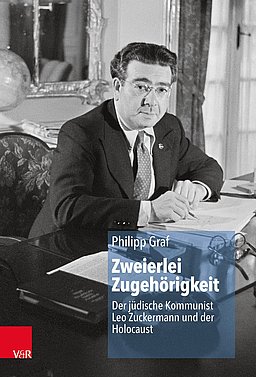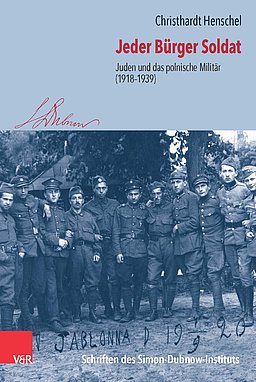Thinking Beyond the ‘Soviet Jewry’ Narrative. Localism, Diversity, and Subjective Experiences of Jews in the Soviet Republics under Late Socialism
October 9–10, 2024, Marburg
Application Deadline: April 15, 2024
International Conference, October 9-10, 2024
Herder Institute for Historical Research on East Central Europe – Institute of the Leibniz Association
Gisonenweg 5–7, 35037 Marburg, Germany
The discursive construct of “Soviet Jewry,” defined as a homogeneous unit, was shaped to a significant extent by the Soviet regime’s centralistic features, including its nationalities policies. The concept of a “Soviet Jewry” was also widely adopted in the West during the Cold War era. It persisted as a trope in scholarship and public discourse, both in East and West, as long as the Soviet Union existed, and it continues to retain retrospective currency even today. Yet, seen subjectively from within the Jewish perspective, the Soviet environment was diverse and heterogeneous, and so were the experiences of Soviet Jews. Other populations, residing in the various (sometimes remote) parts of the Soviet state, similarly experienced life under the Soviet regime in ways fundamentally distinct from the dominant, “central,” Soviet normativity.
The spectrum of Jewish behaviors and experiences, spanning the broad middle ground between conformity to Soviet norms and values, at one end, and the heroic struggle for emigration, at the other end, has yet to receive serious attention. Thinking beyond the familiar narratives of assimilation, state oppression, and radical dissent, we aim to spotlight and examine the ethnic, cultural, and social diversity of Soviet Jews. We also seek to redirect our attention from the center to the Jewish communities at the Soviet “periphery,” in the so-called Soviet “national republics”.
The continuity of Jewish traditions, whether of pre-Soviet origin or having arisen in the wake of Sovietization, was palpable in many places outside Moscow and Leningrad – including Belarus, Ukraine, and Moldova, as well as the Baltic, Caucasus, and Central Asian republics. Scholars have, for instance, pointed to the persistence of the Yiddish-speaking culture. Paramount also, was the vivid (whether explicit or tacit) memory of the Holocaust, associated exactly with these places.
We are interested in exploring the porous borders of Soviet (non)Jewishness, and the character and intensity of Jewish-non-Jewish encounters in the Soviet peripheries. Soviet Jews, who were simultaneous ‘insiders and outsiders’, were an integral part of Soviet society that, on the one hand, contributed to its construction and development and, on the other, as some scholars suggest, helped to expedite its unanticipated dissolution. This pericentral and decentralized gaze should facilitate the illumination of oft-overlooked themes and methodological issues in Jewish and Soviet history: everyday living and its effect on the identity of Soviet Jewry; Jewish subjectivity as it evolved under the severe objectivization imposed by the regime; social contacts and networks; gender and age; relationships with others, at the group-level and the micro level; and the convergence as well as divergence of Jewish narratives with the (late)Soviet national narratives. Shifting the focal paradigm by foregrounding multiple local Jewish experiences is also intended to highlight center-periphery relations as they were established in Soviet, East European and Jewish Studies. The decision of the Soviet authorities to permit Jewish emigration from the USSR, which started again in 1968, was correlated with changes that took place in late socialist society and brought renewed attention to ‘Soviet Jewishness’. In the Soviet Union, the question of emigration was framed not only by domestic concerns, but also by external security issues, and these came to be expressed via the accustomed enemy-searching rhetoric of the Cold War.
Security and threat formed a central axis in the Soviet worldview and they determined the Soviet state’s relationship with the rest of the world. When security was factored into the emigration discourse, as this applied to Jewish (and other) citizens, it compounded and exacerbated other underlying problems. While the Jewish population was in the process of emigrating in large numbers, antisemitism and the question of security reappeared with renewed force. Though the intention to leave the Soviet Union was not treated as a criminal offense anymore, it elicited public denunciations and was often condemned as treason. Ironically enough, those who stayed were likewise treated with suspicion. The economic and political turbulence of Mikhail Gorbachev’s perestroika, as well as the looming public health catastrophe caused by the Chernobyl (Chornobyl) Nuclear Power Plant disaster, magnified the sense of impending threat and, by extension, may have triggered or augmented the mass emigration movement. How did this continued securitization affect the life of Soviet Jews on the peripheries, beyond the interested gaze of Western embassies and international correspondents? What kind of effect did it have? Did it manifest itself more intensely in some spheres of life, perhaps, and more diffusely in others? The reality of violence and threats to personal security during the last several years, affecting Jews, Ukrainians, and others, underscores the relevance of treating these issues as historically rooted phenomena.
Topics for discussion:
- Historicizing the discursive construct of ‘Soviet Jewry’ and ‘Soviet Jewishness’
- The cultural and social diversity of Jewish experiences under late Socialism
- The gendered experience of life in Soviet-periphery communities
- The relationships between Jewish “Soviet-ness” and cultural “Russian-ness” in local/regional contexts: where and how did these clash or converge?
- The rise of antisemitism in formerly allegedly tolerant areas, such as Soviet Belarus, and its possible grounds
- Jewish reactions, responses, and protests against the rise of antisemitism in Soviet society in ‘national’ and ‘autonomous’ republics
- The relationship between Jewish culture and traditions and the homogenizing projects of national culture that arose during late socialism in the milieu of the national intelligentsia in the corresponding national republics
- Jews and Jewishness in local Jewish and non- Jewish Art and Culture
- Revival of Jewish life in the Soviet republics under late Socialism and during Perestroika
- Encounters between local Jewish and non-Jewish cultures and everyday experiences
- Mixed ethnonational families in the Soviet periphery
- Jewish Religion and religious institutions around the Soviet periphery
- Appropriation of local Jewish heritage into national cultures and cases in which, on the contrary, the Jews’ heritage was denied inclusion
- The variety of Jewish experiences of emigration from the Soviet peripheries
- Emigration, risks, and threats of the Perestroika period
To participate, please, send the abstract of your paper (up to 500 words) and your short bio (up to 300 words) to forum(at)herder-institut.de by April 15th, 2024.
Organizers can cover accommodation (up to two nights) and travel costs for the accepted participants (due to budget limitations the latter applies only to the travels from Europe and Israel).
Organizational Committee
Tatsiana Astrouskaya (HI, Marburg), Thomas Bohn (JLU Giessen), Juliane Fürst (ZZF, Potsdam), Semyon Goldin (Hebrew University Jerusalem), Heidi Hein-Kircher (HI, Marburg),
Jannis Panagiotidis (RECET, Vienna), Jakob Stürmann (Dubnow Institute, Leipzig)
Organzizers
Tatsiana Astrouskaya, Herder Institute for Historical Research on East Central Europe, tatsiana.astrouskaya(at)herder-institut.de
Semyon Goldin, Hebrew University Jerusalem, semyon.goldin(at)mail.huji.ac.il



